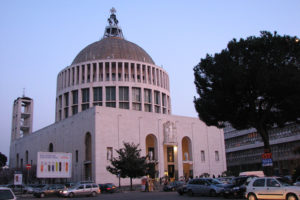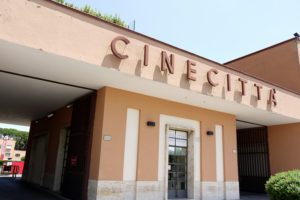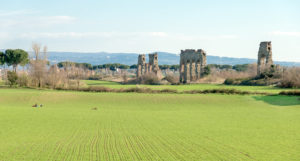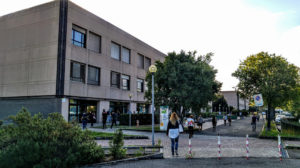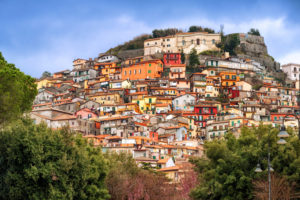It was built in the beginning of the 1950s by the Sicilian architect Gaetano Rapisardi. On February 5th 1965, Pope Paolo VI made it a cardinal deaconry thanks to the constitutio apostolica Romana haec Sedes, naming it San Giovanni Bosco in via Tuscolana. On November 20th of the same year he made it minor basilica with the apostolic letter Adulescentium patris.
The church is externally solid and it is dominated by two cupolas. The main of them has a 40 meters diameter. San Giovanni Bosco is the third among Roman churches after Pantheon and the Basilica of St. Peter. In it you can see a bronze work of Alessandro Monteleone, namely four angels – which are 3 meters high – sustaining a crown on the top of which there is a cross.
There you can enjoy the facade, the portico with 5 bronze doors and the interior which is decorated by many-coloured glass windows, which create an unique effect, as well as a huge mosaic on the bottom of the presbytery. This mosaic is 100 square meters, it represents san Giovanni Bosco’s Glory and it is flanked by eight bas-relieves which illustrate important events in the life of the Piedmontese saint. All of these are enriched by work of art of 20th century Italian artists: Michele Gorrisi, Emilio Greco, Paolo Crida, Goffredo Verginelli, Baccio Maria Bacci, Attilio Torresini, Lorenzo Gigotti, Enrico Martini, Antonio Biggi, Primo Conti, Tommaso Bartolini, Mario Caffaro Rore, Emilio Notte, Oddo Aliventi, Silvio Consadori, Enzo Assenza.
On the left choir of the presbytery there is a huge tambourine opus 304 pipe organ built between 1958 and 1959. The organ has an original and complete electrical transmission with the console in the choir. It has 70 regal registers and 40 derived registers with 5,274 pipes and 13 tubular bells. Today it is one of the biggest pipe organ in Italy still. Here its phonic disposition.




